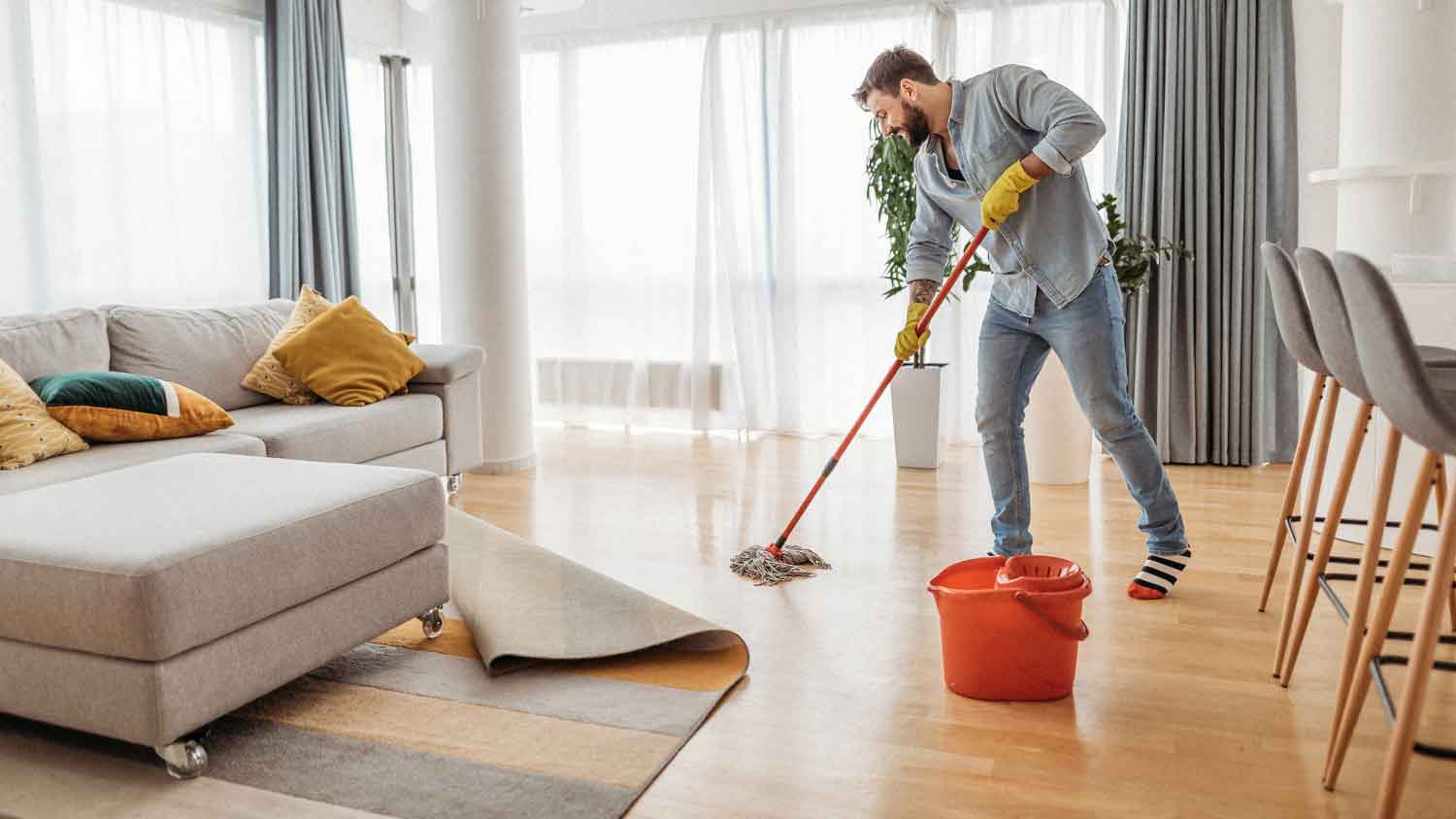The Ultimate Guide to Cleaning and Caring for Marble, From Floors to Countertops
Learn how to master the maintenance of marble


Marble is more susceptible to stains, scratches, and etching.
Prevention and daily cleaning are key to maintaining marble.
Different techniques and solutions should be used on different surfaces.
Marble is a timeless material that can transform the look and feel of your space, whether you use it in the bathroom, kitchen, or in furniture. But for all of its beauty, it does come with one drawback: it can be tricky to clean correctly. Because marble is made from natural stone, it requires more attention, special products, and prevention methods to keep it in mint condition.
If you recently installed a marble countertop or are considering using the material in your home but have a few reservations, learn how to clean marble floors, countertops, showers, and more. All you need is the right solution, cloth, and information.
How to Clean Marble Floors

The good news about marble floors is that they’ll never go out of style. The bad news, however, is that they’re more susceptible to scratches than other materials, such as porcelain or vinyl. To prevent scratches and scrapes on marble floors, it’s important to keep dirt and grime at bay. In this scenario, a dry dust mop is your new BFF.
To clean marble floors, take your dry dust mop and remove any dirt or dust that has been tracked in.
Then, use a steam cleaner to clear up any grime that won’t budge (just make sure you thoroughly dry your floors right after).
It’s also helpful to place rugs in strategic spots, such as in front of doors and high-traffic areas, to protect marble floors from further damage. Another tip to keep marble from scratching is to put furniture on pads to keep scratching from occurring.
How to Clean Marble Countertops

Because cooking often requires the use of acidic ingredients, marble countertops can be even harder to maintain over time without the right processes in place.
Cooking tools, such as silicon mats and cutting boards, are imperative to keeping harmful elements off of your countertops, as are trivets and hot pads. Because once those acidic ingredients, which are included in everything from tomato juice to vinegar, hit your countertops, they can eat into marble in seconds.
The best method for cleaning marble countertops, however, is wiping away any spills that may take place the second you see them. Marble is especially porous, so a spill that can sit on engineered stone without lasting impact can wreak havoc on marble.
Because the cost of marble countertops is higher than other materials, it’s wise to prevent spills and stains at all costs to protect your investment.
How to Clean Marble Tables

If you want to know how to clean a marble tabletop, the answer is pretty similar to countertops: prevention, prevention, prevention. Coasters are key to keeping water stains from sweating onto the surface of your table, and spills should be wiped away as soon as they happen. Even spilled water should be wiped away with a clean, dry cloth to prevent a film from permanently marking the table.
How to Clean Marble Showers

While other marble surfaces are prone to stains and etching, marble showers are prone to damage from the dreaded soap scum. You can keep scum from spreading in your shower by using a squeegee on your walls after every shower. With this tool, you can wipe away excess water and soap, which will keep scum from damaging the marble.
The cost of installing a marble backsplash ranges from $90 to $3,500, so you can imagine the investment an entire marble shower would be. Although cleaning away water and soap on a daily basis may seem tedious, it’s an important part of keeping your marble shower looking its best.
How to Clean Stains on Marble
If we’re being honest, there will likely come a time when a spill occurs on marble floors, countertops, tables, or showers that you can’t get to right away. When this occurs, and your marble begins to stain, just do your best to get to it as soon as possible.
For stains that come from wine, coffee, or food, a solution of 12% hydrogen peroxide mixed with ammonia should take care of it.
Oil-based stains from items such as milk, makeup, or cooking oil will require a different treatment. For these spills, your best bet is to try and lift the stain with acetone or mineral spirits, then rinse them away.
How to Clean Scratches on Marble
Small nicks, scratches, and water spots can usually be buffed out with #0000 steel wool. Deeper scratches that go below the surface, however, will need the help of a professional to make sure they’re removed properly.
It also helps to have your marble surface routinely treated by a local house cleaning service on top of your daily maintenance.
Best Practices for Cleaning Marble

The key to keeping marble in tip-top shape is to tackle spills as quickly as possible to prevent them from staining. As soon as you notice a spill, soak up the liquid with a paper towel and blot any remaining residue to keep the stain from spreading. This is especially important for spills that contain citrus or alcohol.
It also helps to reseal your marble about once a month, which can strengthen the finish and buy you a few minutes to clean a spill before it becomes a permanent mark on your furniture, countertop, floors, or tile. If you have permanent damage to a surface, contact a marble restoration company near you.
FAQs
What cleaning products should I keep off of marble?
Bleach, window-cleaning products, and vinegar are three cleaning solutions that should never come in contact with marble if you can help it. The acidity in each will pose harm to your marble, so steer clear from this trio of products. The same can be said for rust-removing cleaners or gritty cleaners that could scratch the finish of your marble.
How often should marble floors be polished?
Depending on how much traction your room sees, you’ll need to have marble floors polished every 1 to 3 years. Regular cleanings in between can also help maintain your floors stay shiny and stay in shape for 20 to 25 years.















